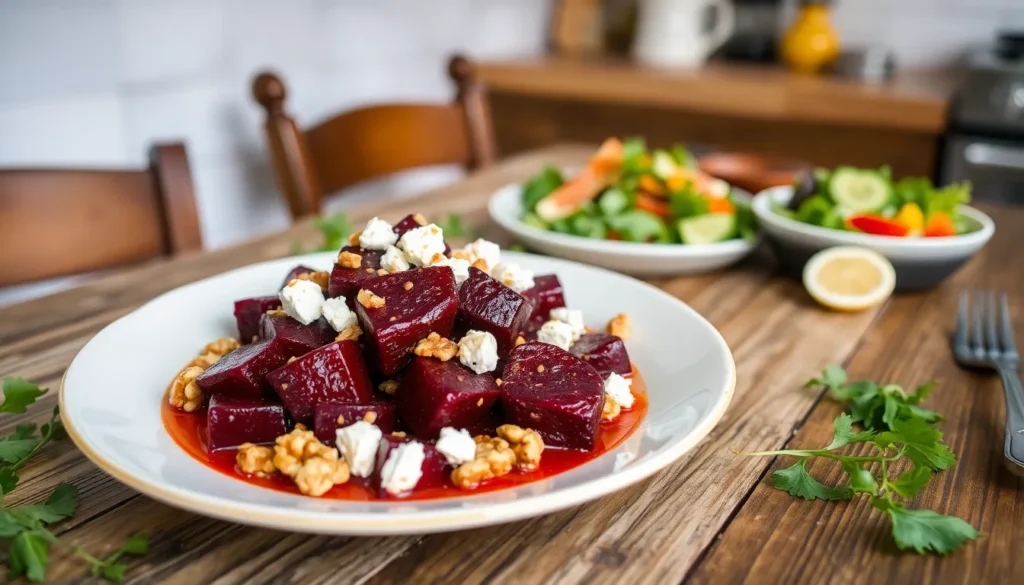Table of Contents
ToggleHigh blood pressure is like that annoying guest who overstays their welcome—uninvited and definitely not good for your health. While medications and lifestyle changes often take center stage in the battle against hypertension, there’s one superstar food that could steal the show and send high blood pressure packing.
The Importance of Managing High Blood Pressure
Managing high blood pressure is crucial for overall health. Uncontrolled hypertension increases the risk of heart disease, stroke, and kidney problems. Many think medications are the only option, but lifestyle changes also play an important role.
Diet significantly impacts blood pressure levels. Eating a balanced diet rich in fruits and vegetables can lower hypertension. The American Heart Association recommends increasing potassium intake while reducing sodium consumption.
Regular exercise also contributes to lowering blood pressure. Engaging in moderate-intensity exercise for at least 150 minutes weekly can yield beneficial results. Stress management techniques, such as yoga or meditation, also help maintain healthy blood pressure levels.
Monitoring blood pressure regularly is essential. Routine checks provide feedback on effectiveness of dietary changes and lifestyle modifications. Tracking progress encourages individuals to stay committed to their health goals.
Educating oneself about the risks associated with high blood pressure and ways to manage it fosters a proactive approach. Knowledge equips individuals to make informed choices about their diets and physical activities. Finding support from healthcare professionals or community resources enhances the management process.
With the right food choices, like specific fruits and vegetables known to reduce blood pressure, individuals can combat hypertension effectively. Emphasizing dietary strategies provides a complementary solution to traditional medical approaches, reinforcing the importance of holistic health management.
An Overview of High Blood Pressure

High blood pressure, also known as hypertension, poses serious health risks. Understanding its causes and effects is crucial for effective management.
Causes and Risk Factors
Genetics often plays a significant role in developing high blood pressure. A family history of hypertension increases the likelihood of experiencing the condition. Poor dietary choices, particularly high sodium intake and low potassium consumption, contribute to elevated blood pressure levels. Age also serves as a critical factor; individuals over 45 face a greater risk. Physical inactivity, obesity, and excessive alcohol consumption further exacerbate hypertension. In addition, stress can lead to temporary spikes in blood pressure. Smoking introduces harmful chemicals that damage blood vessels, increasing hypertension risk. Identifying and addressing these causes allows individuals to make informed lifestyle changes for better health.
Effects on Health
High blood pressure negatively impacts multiple bodily systems. Increased strain on the heart often leads to cardiovascular diseases, including heart attack and heart failure. Stroke risk rises significantly due to potential blood vessel damage in the brain. Kidney function suffers under constant high blood pressure, resulting in potential kidney failure. Vision impairment can occur from retinal damage caused by hypertension. Cognitive decline may also result from reduced blood flow to the brain. By recognizing these effects, individuals can understand the necessity of managing their blood pressure effectively. Promoting awareness fosters proactive health management, leading to improved overall well-being.
The Power of Diet in Controlling Blood Pressure
Diet plays a crucial role in managing blood pressure. Specific foods can effectively lower hypertension levels.
Foods That Help Lower Blood Pressure
Leafy greens, such as spinach and kale, provide essential nutrients that help reduce blood pressure. Berries, particularly blueberries, contain antioxidants, which contribute to cardiovascular health. Beets and garlic also show significant potential in lowering blood pressure due to their nitrate content. Fatty fish, like salmon, supply omega-3 fatty acids that enhance heart function. Finally, bananas offer potassium, a mineral proven to counteract sodium’s effects on blood pressure. Incorporating these foods into daily meals supports overall vascular health.
Nutritional Guidelines to Follow
Maintaining a balanced diet is vital for blood pressure control. Prioritize fresh fruits and vegetables, aiming for at least five servings per day. Limit sodium intake to under 2,300 milligrams, ideally reducing it to 1,500 milligrams for better results. Focus on whole grains, which provide fiber and vital nutrients. Choose lean protein sources, including poultry, fish, and legumes, to ensure nutritional diversity. Lastly, select healthy fats like olive oil or avocados while minimizing saturated and trans fats. Adhering to these guidelines fosters better blood pressure management and overall wellbeing.
The Star Food: 1 Food That Kills High Blood Pressure
This section highlights a specific food known for its ability to effectively lower high blood pressure.
Description and Nutritional Profile
Beets stand out as a powerful food against high blood pressure. Packed with essential nutrients, beets contain vitamins A, C, and K, as well as fiber and antioxidants. Notably, their high nitrate content converts to nitric oxide in the body, which helps relax blood vessels and improve blood flow. Each 100 grams of beets provides approximately 40 calories, making them a low-calorie choice. The potassium level in beets also supports heart health by balancing sodium levels in the body. With these attributes, beets play a significant role in a hypertension-friendly diet.
Scientific Evidence Supporting Its Benefits
Research supports beets as an effective dietary option for managing high blood pressure. A study published in the journal Hypertension found that consuming beet juice resulted in a notable reduction in blood pressure among participants. The nitrates in beets lower systolic and diastolic blood pressure significantly. Another investigation highlighted that hypertensive individuals experienced improvement after regularly consuming beetroot supplements. These findings indicate that incorporating beets into daily meals can contribute positively to blood pressure regulation.
How to Incorporate This Food into Your Diet
Including beets in daily meals can significantly impact blood pressure management. These nutrient-rich vegetables offer versatility in various dishes.
Delicious Recipe Ideas
Roasted beets deliver a natural sweetness and can be paired with feta cheese or walnuts. For a vibrant salad, combine sliced beets with arugula, a drizzle of olive oil, and balsamic vinegar. Another option involves blending beets into smoothies with yogurt and berries, creating a nutritious breakfast or snack. Beet soup, or borscht, provides a warming choice during colder months and retains many health benefits. These recipes showcase beets’ flavor while enhancing overall nutrition for those managing hypertension.
Serving Suggestions
Serving beets alongside grilled chicken or fish enhances meals with an extra boost of nutrients. Adding thinly sliced beets to sandwiches introduces color and taste while maintaining a light profile. For a quick snack, enjoy pickled beets with whole grain crackers, perfect for satisfying cravings. Mixing beets into coleslaw adds crunch, while retaining essential vitamins. Ensuring variety in beet consumption helps maintain dietary interest and supports blood pressure regulation effectively.
Incorporating beets into a daily diet can be a game changer for those managing high blood pressure. Their unique combination of nutrients and high nitrate content supports heart health by promoting better blood flow and relaxing blood vessels. This simple yet powerful food offers an accessible way to take control of hypertension naturally.
By making conscious dietary choices and embracing foods like beets, individuals can significantly impact their overall health. Regularly monitoring blood pressure and combining dietary changes with other healthy lifestyle habits can lead to lasting improvements. With commitment and the right food choices, managing high blood pressure becomes a more achievable goal.




